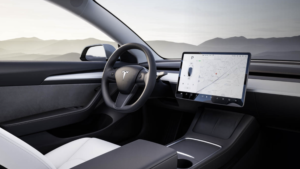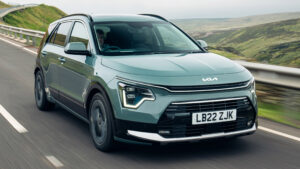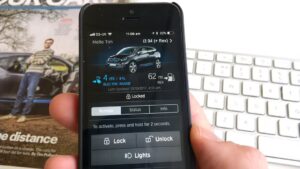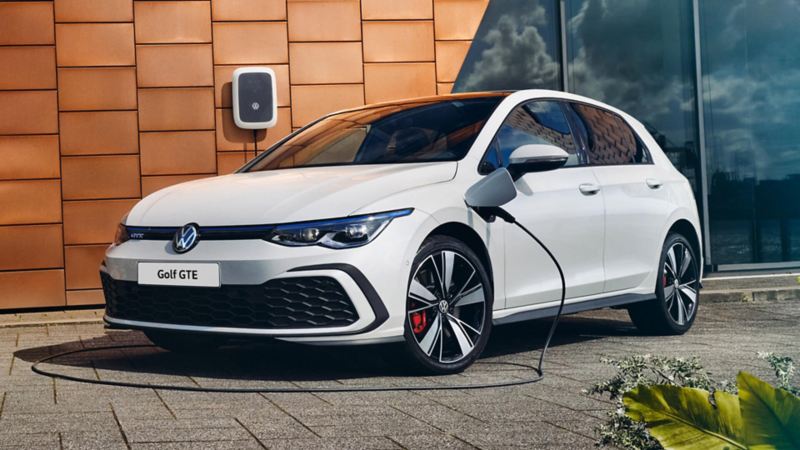Everyone knows what an electric car is, and what a traditional Internal Combustion Engined car is – but what is a hybrid car? In this article, we’ll explain everything you need to know about one of the most popular and efficient types of car on the road today: The best hybrid cars feature a range of benefits over standard cars; in addition to being more efficient than traditional cars, they also lack the range anxiety and infrastructure issues of EVs. Time will play a crucial role in the automobile revolution in Ghana and other African countries. But one things is sure. EV’s are here to stay.
How do hybrid cars work?
Hybrid cars have been around for two decades in series production: Japanese manufacturers have led the charge, and the Honda Insight and Toyota Prius were both launched within months of each other in the late 1990s. How influential these early pioneers have proven to be…
They use a ICE as well as an electric motor, and that means unlike even the best BEVs (battery electric vehicle) hybrids also have a petrol or diesel engine to fall back on if the electricity supply is dwindling.
Simply put, the best they’re a bridge between the fossil-fuel age and the new era of electrification. Buy one if you want to reduce your CO2 emissions, save fuel, dodge congestion charges – and, for a while at least – potentially lower your tax bills.
In this article we explain the major types of hybrid car on sale in 2023 and explain what types of hybrid car you can actually purchase right now. What’s the difference between a mild hybrid and a PHEV? Keep reading to find out.


What are the types of hybrid car?
A full hybrid is a car which can drive under its own electric power, petrol or a combination: an electric motor onboard is capable of driving the wheels under full e-power for a short distance, although most of the time the car will be driven by a mixture of combustion engine and electric motion. They are sometimes called ‘parallel hybrids’. Examples of full or parallel hybrids include cars like the Toyota Prius and the BMW 330e. Their batteries are typically small-capacity and they’re optimised for mixed running in daily driving, rather than extended zero-emissions electric range.
What is a mild hybrid car?
A mild hybrid car is one which cannot drive under electric power alone; the electric part of the powertrain is only used as assistance, and as a way to sometimes cut emissions.
What is a plug-in hybrid car (PHEV)?
A plug-in hybrid is often also referred to as a PHEV, standing for Plug-in Hybrid Electric Vehicle. The name even makes it on to the side of the car sometimes – see the Mitsubishi Outlander PHEV, for example.


In a delightfully Ronseal fashion, a plug-in hybrid does exactly what it says on the tin: you can plug it in to charge up the batteries when you’re at home or on a long journey This means you can provisionally start every journey with a full battery, maximising your chances of driving into city centres on silent and zero-emissions EV mode. Examples of PHEVs include the BMW i8 and VW Golf GTE. They typically have bigger battery capacities to enable their longer electric range (typically around 20-30 miles today). However, recent studies have proved that many owners treat them as internal combustion engine cars, never charging them up. This is a really bad idea, as you have to carry all the weight of those batteries, but without the benefits in efficiency they can bring. The result? Sky-high bills and fuel economy worse than a petrol or diesel car!
That’s what we found when analysing the running costs of our hybrid long-termers, too.
What is a range-extender or REX hybrid car?
Yep, yet another category of hybrid… REX stands for Range-Extender electric vehicle, meaning the internal combustion engine onboard is only ever used as a generator to charge the battery of an EV, rather than to drive the wheels. The BMW i3 REX, Vauxhall Ampera and Chevrolet Volt are good examples of the genre. These range-extenders are also sometimes called a series hybrid (so named because the electric motor always drives the wheels – the internal combustion engine (ICE) is plumbed straight into the electric drivetrain, rather than the wheels on the road.
How do I charge a hybrid car?
Most hybrids are charged automatically without any intervention by the driver. Regenerative braking uses energy wasted during braking or coasting to recharge the battery, with lots of little micro top-ups during normal driving. Toyota has even started calling its models ‘self-charging hybrids’ to convey this to buyers. The exception to this rule is a PHEV, which can be plugged into an electric plug to top up the battery: this can be done either at an EV charging point for faster charging or a domestic three-point plug if you’ve got time for a slow trickle charge.
Should you buy a hybrid car in 2023?
You’re probably reading to find out if it’s worth buying a hybrid car – and it’s time to answer that question. The Prime Minister and Transport Secretary have announced that the sale of all new petrol and diesel cars will be banned from 2035 – five years earlier than planned – and the ban will apply to hybrid cars, too. Until this announcement, most expected hybrid cars to hop through the ban unscathed. That’s no longer the case.
In short, it’s still worth buying a hybrid car – especially if you’ll be able to save money for the foreseable future.
Are there diesel hybrid cars?
Most hybrid cars have a petrol engine due to their relative quietness and refinement, but brands such as DS and Peugeot sometimes use diesel engines for higher levels of fuel economy at motorway speeds. At lower speeds, most hybrids allow a short period fully-electric driving with the engine taking over as the speed increases. Depending on the system, the electric motor then switches off, coming back on seamlessly when extra power is required, such as when overtaking.
Are all hybrid cars automatics?
The majority of hybrids also use an auto ‘box, so you don’t have to change gear. You’ll usually find a Continuously Variable Transmission (CVT) gearbox, designed to maximise economy and deliver torque or pulling power when you need to accelerate fast.
source: car magazine




